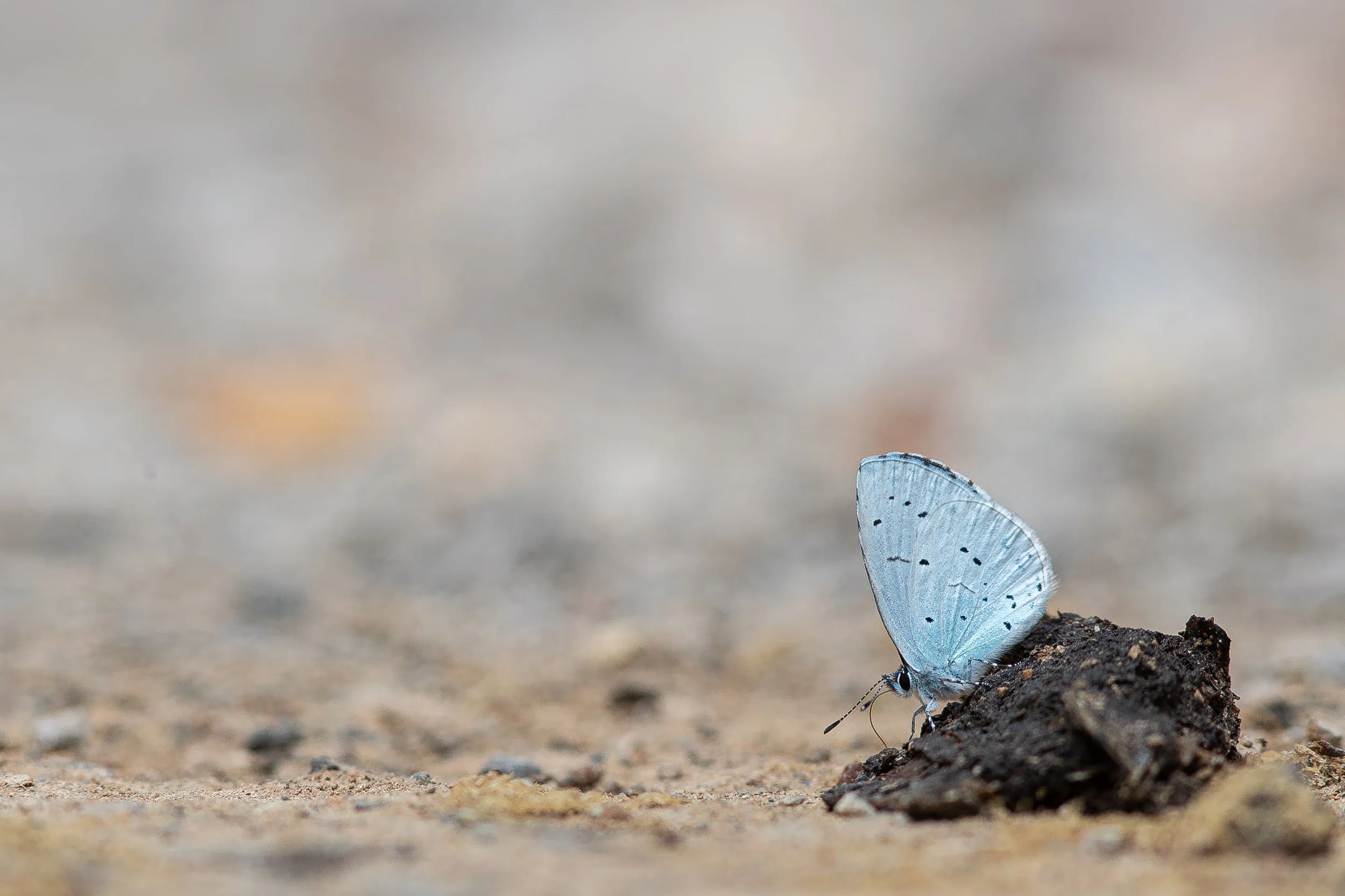Come dine with me …
Mud-puddling and other Bad Habits.
As with most insects, butterflies do the majority of their growing and eating during the larval stage. Nevertheless, the adults still require nutrition. This is predominantly obtained in the form of floral nectar, along with tree sap and other sugar-based foods for flight energy, with other micronutrients being required for egg maturation and successful reproduction. It is these that are gained from a number of apparently strange sources including animal dung, bird droppings, urine, human sweat, rotting fruit, fermenting juices from timber, dead fish, animal carcasses, honeydew (sugar-rich excrement produced by aphids) and even dew-covered embers from fires.
The term ‘puddling’, which originates from the tropics, is often used when butterflies visit animal dung and urine-soaked ground. This behaviour can often be observed on patches of damp ground or streamside mud where animals have been drinking and then defecated. In our own quest for finding ‘exotic’ species in Britain, the magnificent Purple Emperor being a classic example, it is possible to use the equivalent, including human body fluids, to attract such butterflies. Puddling also occurs on seepages, muddy puddles, drying riverbanks and has been observed on roadside verges after heavy rain. The main purpose of this act appears to be the collection of key nutrients, which are otherwise scarce in their regular diets. Evidence suggests that the primary target is sodium, although nitrogen and phosphorous rich compounds may also be essential.
There is still debate as to why butterflies and indeed other insects require these additional nutrients. It has been suggested that sodium plays an important role in a number of physiological processes including assisting amino acid uptake during the digestive process and assisting neuromuscular activity. Another theory suggests that these additional nutrients are important to the male of the species by allowing them to better provision their spermatophores prior to passing to the female during copulation, due to the additional nutrients they contain. Whatever the reason, the act of ‘puddling’ is undoubtedly a fascinating behaviour. Whether it is undertaken as, what appears to us, an unusual choice of nuptial gift or the entomological equivalent of drinking a can of high energy drink, many aspects of this behaviour still remain unanswered.
